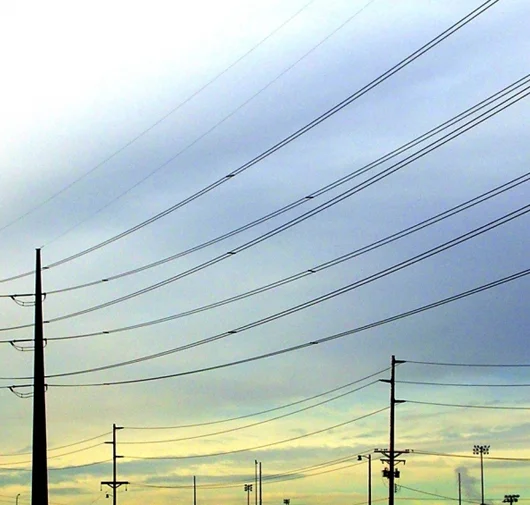Save thousands in 3 simple steps!

Complete the short form above

We compare the market to find you the best 3 quotes

You receive your quotes directly from the Leased Line Providers within 24 hours
Over 10,000 companies have compared with us, including:








Fiber to the Premise (FTTP): Cost and Benefits

Unbiased & Impartial Experts
If you search for FTTP comparison there are a lot of sights that come up claiming to compare prices. These are all websites run by providers & only compare the tail circuit and don’t give you a true comparison. We are completely impartial and only compare credible providers who undergo a vigorous screening routine. We are confident you will be happy with our simple process to get you the best-priced FTTP line available.

Save yourself the time
We compare the best FTTP providers in the UK and put you in touch with the top 3. This means you don’t have to be harassed for weeks by numerous sales calls/emails & can trust you have the best options on the market.

Save Money
The obvious reason people do comparisons for anything in life is to save money and FTTP lines are not an exception to this. However, because of the volume of comparisons we do, our providers also give us exclusive discounts which means you can save up to 30% getting quoted through us compared to going direct.
What is FTTP?
Fibre to the premises is a type of connectivity that uses fibre optic cables from the exchange point directly to your building. It boasts super fats speeds and better reliability than traditional broadband technologies. Its a much improved service if you are able to get it. However, only about 3% of the UK can currently install it, the availability is sparse but many providers are increasing availability across the UK.
One main advantage of FTTP is the speeds you can achieve. On Fibre to the premises fttp you can get maximum speeds up to 1GB download and 220MB upload, but the speed you get does depend on how far away you are from the exchange point, much like adsl or adsl2. The further away you are from the exchange, the lower the speed you’ll receive.
If it is available at your location you can pick the bandwidth you’d like to receive, the lowest is 160MB upload and 30MB download, and the highest is 1GB upload and 220MB download. However, these speeds aren’t guaranteed as it’s a shared connection, the bandwidth and reliability can be similar to what you experience on ADSL lines.
Contrary to popular belief FTTP is not uncontended, even though speeds can be similar to a dedicated leased line, it is ultimately classified as a type of broadband connection. But with most FTTP providers you can improve your service with additional benefits such as Enhanced Care or Critical Care support, which insure your line enabling quick repairs should any faults arise.
Fibre to the premises (fttp on demand) contracts can be 12 months – 36 months term much like a traditional broadband service that uses your phone line. Instead of using traditional phone services it utilises the existing fibre infrastructure from exchange level.
FTTP Providers
There are a number of FTTP providers in the UK. All will offer similar services so the driver for most businesses will usually be price related. Some of our recommended FTTP providers include:
- BTnet
- Virgin Media Business
- TalkTalk
- Daisy
- Zen
- Aspire
- Vaioni

FTTP Prices
FTTP Prices
The cost will vary from provider to provider. For the lower bandwidths you’d be looking at around £250 per year (around £20 per calendar month) and for the higher bandwidths you’d be looking at around £1000 per year (around £85 per calendar month). FTTP Installation cost depends on the length of the contract you take out. If you go for a 12-month contract then there will be installation costs, this cost will vary from different FTTP providers. But if you go for a 3-year contract, then normally the installation cost will be free.
Complete our short form now and get a FREE quote today!
FTTP vs. Leased Lines
FTTP and a leased line may seem similar because they both have fibre optic cables delivering data from the exchange point to your premises, however an FTTP service is classed as a type of broadband connectivity – full fibre broadband. It has speeds up to a maximum of 1GB, whereas leased lines have a maximum speed of 10GB.
The contention ratio of leased lines is one-to-one, whereas with FTTP it a shared connection amongst other local businesses and residential users. Having a contended line means there will be downtime on FTTP lines occasionally, so if you need the guaranteed maximum bandwidth 100% of the time, then leased lines may be more suitable for your business.
On FTTP lines, the SLA (Service Level Agreement) is weaker compared to the SLA on leased lines. With leased lines, you get guaranteed speeds & should there ever be a fault on the line you will start earning money off next months contract.
FTTP vs. Leased Lines: Price Difference
If there is a fibre line at your location already, then the installation time will be reduced dramatically. On the opposite end of the spectrum, if ECC’s apply this will prolong the installation time. For example, if the line needs to go through a train track, then a day and time will need to be set for the trains to stop running so the line can be laid.
Depending on if work needs to be done this may have additional costs called ECC’s. The further you are from the exchange, the longer it will take for the line to be installed.
The price difference between them is quite different. Leased Lines are 6 times more expensive than FTTP lines. However they are very different services that offer end users very different benefits. Leased lines vs FTTP is an interesting debate in the telecoms industry at the moment.
The install times of FTTP and leased lines can vary. With FTTP installation can take anywhere from 5 months to 10 months, whereas leased lines are usually installed within 4 months. Each provider will have a different install time, so best to check before committing. Installation time can also change depending on these factors:
- If there is a current line or fibre infrastructure there already
- If there is a lot of ECC’s (excess construction charges)
- Distance from the exchange point
In conclusion, leased lines and FTTC are two completely different types that will serve different business needs. If you need one-to-one contention and no downtime, then leased lines are the best option for you. If having a one-to-one contention and downtime won’t impact your business then its a great service to use.
The only way to get a true idea of costs is to get some quotes which is where we can help. We simply take your details and then do all the legwork to get you the most competitive price on the market. All we need to do is understand your requirements and then you will get the best providers.